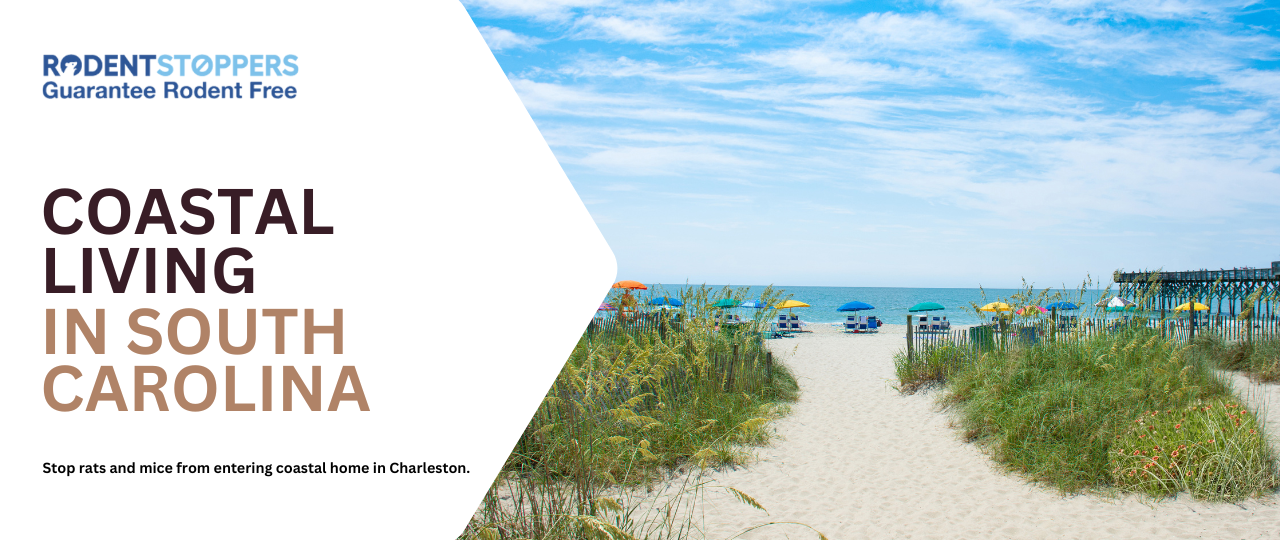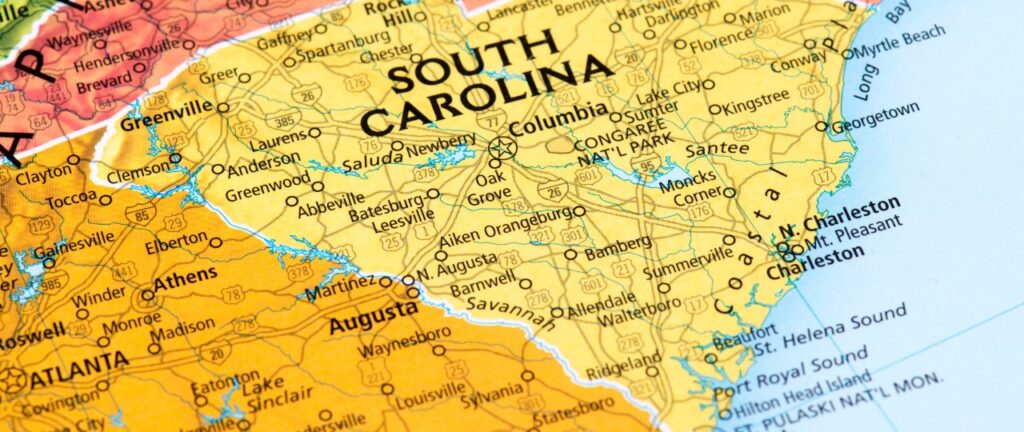
Charleston, South Carolina, is celebrated for its picturesque coastal landscapes, historic charm, and vibrant ecosystem. However, the very features that make Charleston an attractive place for humans also create a thriving environment for rodents. The city’s humid climate, frequent flooding, and proximity to water sources like rivers, marshes, and the Atlantic Ocean contribute to increased rodent activity. Understanding how coastal living influences rodent behavior can help Charleston residents take proactive steps to protect their homes and properties.
The Role of Charleston’s Humid Climate in Rodent Activity
Charleston’s humid subtropical climate provides the perfect conditions for rodents to thrive year-round. Unlike colder climates where rodent activity peaks in the winter, Charleston’s mild winters allow rats and mice to remain active and breed continuously. High humidity levels are particularly appealing to rodents, as they need moisture to survive. The consistent availability of water and damp environments in Charleston homes—such as basements, crawl spaces, and attics—creates ideal nesting conditions.
Additionally, the warm temperatures make outdoor areas like gardens and sheds hospitable for rodents. The moisture retained in vegetation, mulch, and soil serves as a water source, while providing cover from predators. For rats, especially species like roof rats and Norway rats, these factors encourage population growth and make it easier to establish colonies close to human dwellings.
How Flooding Draws Rodents Indoors
Flooding is a common occurrence in Charleston due to its low-lying geography, frequent heavy rains, and tidal surges. During storms or high tide events, rodents living in burrows, sewer systems, or marshes are forced to seek higher ground to escape rising waters. Homes, especially those with crawl spaces or raised foundations, offer the perfect refuge for displaced rodents.
Once inside, rats and mice take advantage of the dark, undisturbed areas in crawl spaces, basements, or attics to nest and breed. Even after floodwaters recede, the damp conditions left behind in walls, floors, and stored materials attract rodents and allow them to thrive. Furthermore, flooding can damage structures, creating cracks, gaps, and vulnerabilities that make it easier for rodents to enter homes in the future.
The Impact of Proximity to Water
Charleston’s coastal setting places many homes near rivers, marshlands, and the Atlantic Ocean, all of which are natural habitats for rodents. Norway rats, for instance, are excellent swimmers and often build burrows along water banks. From these locations, they can easily infiltrate nearby properties. Similarly, roof rats are drawn to dense vegetation along coastal areas, which provides ample food and shelter. The abundance of seafood restaurants, marinas, and outdoor dining spaces near the water also creates a steady food supply for rodents.
Proximity to water not only attracts rodents but also increases the likelihood of infestations spreading. Rats and mice use sewer systems, drainage pipes, and waterways as highways to travel between their natural habitats and human structures. This interconnected network makes it easier for rodents to expand their territory and establish colonies in residential areas.
Why Rodents Seek Shelter in Coastal Homes
Coastal homes in Charleston offer rodents a range of shelter options due to their architectural features and surroundings. Raised foundations and vented crawl spaces are common in the area, designed to mitigate flooding risks. However, these features also provide rodents with hidden, protected areas to nest. Attics, basements, and garages serve as ideal nesting sites, particularly when homeowners store clutter or leave food unsecured.
The abundance of food sources near coastal homes further encourages rodents to invade. Outdoor grills, pet food bowls, and unsecured trash bins are easy targets. Gardens with fruit trees or vegetable plants attract rats and mice looking for a steady food supply. Rodents also benefit from the lush vegetation commonly found around Charleston homes, which offers concealment and additional nesting sites.
Rodent Behavior in Response to Coastal Threats
Rodents are opportunistic creatures that adapt quickly to changes in their environment. In Charleston, natural threats like flooding and predators push rodents to seek refuge in human structures. Coastal predators such as snakes, owls, and raccoons drive rodents into homes, attics, and crawl spaces where they feel safer. This constant interplay between the natural environment and human dwellings increases the likelihood of rodent infestations in coastal areas.
Additionally, coastal living often involves seasonal or vacation homes, which may sit empty for extended periods. These unoccupied properties are particularly vulnerable to rodent infestations, as there is no activity to deter rodents from nesting or breeding.
How to Prevent Rodent Infestations in Coastal Charleston
Preventing rodent infestations in coastal homes requires a proactive approach:
- Seal Entry Points: Inspect your home for gaps around doors, windows, pipes, and vents. Use durable materials like steel wool or metal mesh to block these access points.
- Protect Crawl Spaces and Foundations: Install heavy-duty vent covers and ensure access panels are secure. Keep crawl spaces clean and dry to discourage nesting.
- Trim Vegetation: Keep tree branches, shrubs, and vines trimmed away from your home. This prevents roof rats from accessing roofs and attics.
- Secure Food Sources: Store food in airtight containers and keep outdoor trash bins tightly sealed. Remove fallen fruit from trees and clean up after outdoor meals.
- Improve Drainage: Address areas prone to standing water by improving drainage systems. Dry environments are less appealing to rodents.
- Schedule Regular Inspections: Professional rodent control services can identify vulnerabilities and implement tailored prevention strategies for your home.
South Carolina’s Coastline

While Charleston’s coastal environment adds to its charm, it also creates ideal conditions for rodent activity. The humid climate, frequent flooding, and proximity to water all contribute to the prevalence of rats and mice in the area. By understanding these factors and taking preventative measures, Charleston homeowners can protect their properties from the dangers of rodent infestations. Proactive maintenance, combined with professional rodent control services, ensures that your coastal home remains a safe and comfortable haven for you—not for rodents.

